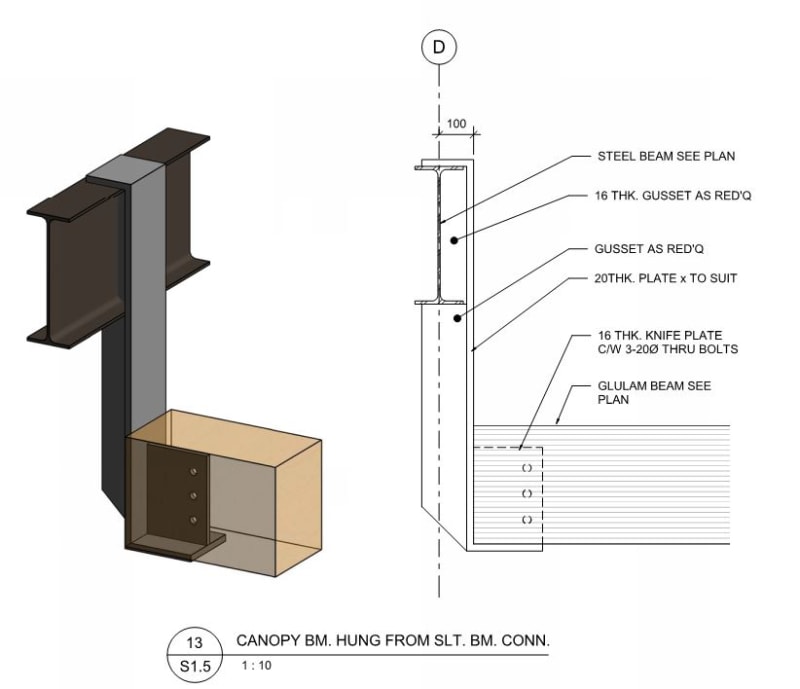EmilC
Structural
- May 2, 2019
- 12
Hello all! Long time reader, first time poster.
I'm looking at a connection in which a deep (36") glulam timber tees into a W beam, with steel deck and slab over both. By my math, this timber will shrink by roughly 5/8" from its as-manufactured moisture content of ~15% to in-service MC of ~8% (conditioned interior space in a institutional building). Having T.O. timber drop 5/8" below T.O. steel seems to me like a serviceability problem with the slab in the corridor above. I'm trying to come up with some options for the architect here; do any of you know of a way to mitigate this?
I'm looking at some of the fancier timber hanger products out there and wondering if maybe there's a way to suspend the timber from a point other than the bottom, but so far that seems like a red herring.
Thanks!
-Emil
I'm looking at a connection in which a deep (36") glulam timber tees into a W beam, with steel deck and slab over both. By my math, this timber will shrink by roughly 5/8" from its as-manufactured moisture content of ~15% to in-service MC of ~8% (conditioned interior space in a institutional building). Having T.O. timber drop 5/8" below T.O. steel seems to me like a serviceability problem with the slab in the corridor above. I'm trying to come up with some options for the architect here; do any of you know of a way to mitigate this?
I'm looking at some of the fancier timber hanger products out there and wondering if maybe there's a way to suspend the timber from a point other than the bottom, but so far that seems like a red herring.
Thanks!
-Emil

